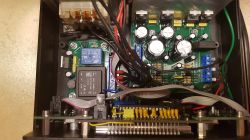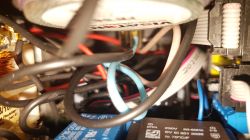Has anyone heard of any materials that do not allow or significantly weaken the magnetic field of a permanent magnet passing through them

Czy wolisz polską wersję strony elektroda?
Nie, dziękuję Przekieruj mnie tamKobra wrote:Hello
Each non-magnetic metal, e.g. Al, Cu, brass etc.
Greetings
398216 Usunięty wrote:A piece of steel sheet (preferably the diameter of a loudspeaker magnet) glued to the loudspeaker magnet at a distance.
See what the older TV speakers look like - there is an additional steel "box" on the magnet and all this so as not to magnetize the cathode ray tube grid ... It worked.
_jta_ wrote:First of all, is it possible to turn this relay? In one position, the influence of the loudspeaker field should be much smaller. How is it arranged?


Quote:In a loudspeaker, it is usually placed along the axis of the coil, because the place where the relay is operated is very close to one pole of the magnet and far from the other with the use of ferromagnetic alone, this will not be reset.Knowing the magnetic field pattern can be helpful - a magnet always has two opposite poles,
Quote:There were two magnets in the box, one generated the field needed for the loudspeaker to operate, the other was about two or three times thinner between the magnetic shield and the pole piece of the main magnet.
See what the older TV speakers look like - there is an additional steel "box" on the magnet and all this so as not to magnetize the cathode ray tube grid ... It worked.

Quote:So you have a choice, it doesn't work but looks better vs it works but looks bad. Both are wrong, I have never understood people who say the first is better :)
But when I desolder it, I can stuff it a bit further from the speakers, maybe it would work, but a little tinkering will come out.
jarek_lnx wrote:This is what the magnetic circuit looked like below, the gray ones are ferromagnetic, the blue and red magnets.
jarek_lnx wrote:So you have a choice, it doesn't work but looks better vs it works but looks bad. Both are wrong, I have never understood people who say the first is better
jarek_lnx wrote:PS The transformer also "dislikes" the immediate vicinity of the magnet, it may deteriorate the properties of the core (saturate) and increase the power losses in the transformer (both losses in the core and in the windings due to an increase in no-load current). Check that it is not overheating.
